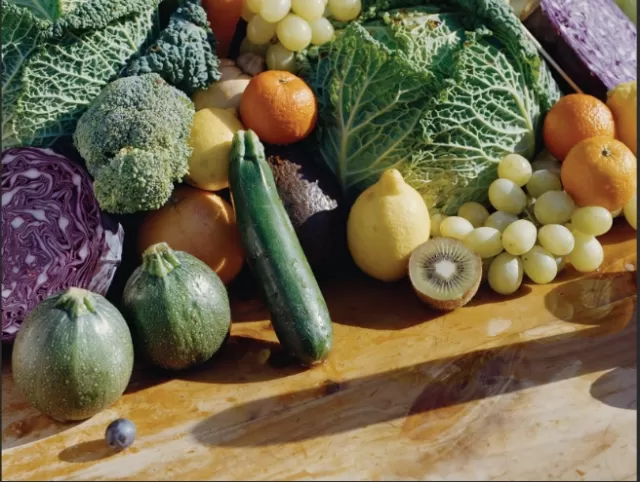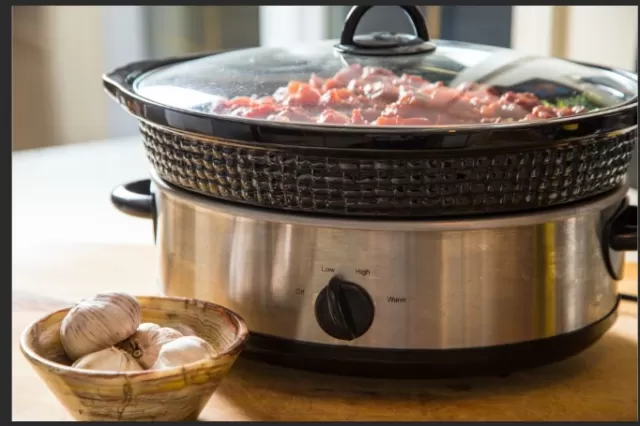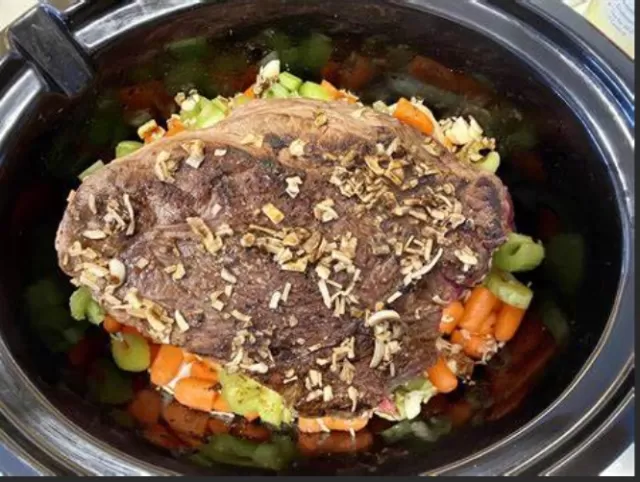Chef-Approved Tips: Avoid These Slow Cooker Mistakes. The slow cooker is a valuable tool for convenient home cooking, particularly for larger families or those who enjoy meal prepping. While it allows for unattended cooking, ensuring flavorful and successful results involves understanding key steps and techniques. Many individuals accustomed to stovetop or oven cooking may overlook essential considerations when using a slow cooker. To prevent common mistakes that can result in watery and bland meals, chefs and cooking experts offer valuable insights.
Avoiding Overcooked Vegetables in Your Slow Cooker Creations

One common pitfall in slow cooker recipes is the risk of turning delicate vegetables into mush due to the appliance’s extended cooking time.
Chef instructor Stephen Chavez and recipe developer Isamar Leal emphasize the importance of timing, particularly when working with more delicate produce like zucchini or peas. To preserve their texture and taste, it’s advisable to add these vegetables toward the end of the slow cooking process, according to Leal.
There is, however, an exception noted by Chavez – if you intend to blend the ingredients, such as in a pureed soup, adding everything at the start is acceptable.
On the other hand, fibrous vegetables like onions and carrots, which hold their structure well, can be added early on. Chavez recommends cutting them into large pieces to ensure they maintain their shape throughout the prolonged cooking period.
Placing these sturdier vegetables at the bottom or near the sides of the slow cooker is also suggested, as they require more time to cook than meat. By being mindful of the timing and characteristics of different vegetables, you can master the art of slow cooking for optimal taste and texture in every dish.
Avoiding Overfilling Woes in Your Slow Cooker
While the allure of preparing large batches or feeding a crowd may tempt you to fill your slow cooker to the brim, heed the warning: overfilling can lead to uneven heating and potential food safety concerns.
Isamar Leal, a recipe developer, emphasizes that an overstuffed slow cooker may not distribute heat evenly, resulting in some parts of the dish being overcooked while others remain undercooked. This not only affects the quality of your meal but also poses a risk of foodborne illness as the ingredients may not reach a safe temperature throughout.
Chef Traci Weintraub further cautions that overfilling could lead to spills as the food warms up, creating a messy situation.
To ensure optimal cooking performance and avoid these pitfalls, Weintraub advises keeping your slow cooker at around three-quarters full. This provides ample room for ingredients and liquids to expand without compromising the cooking process.
By adhering to this guideline, you’ll enhance both the safety and success of your slow-cooked creations.
Cautionary Note: Slow Cooker Reheating and Food Safety

When it comes to reheating leftovers, it’s best to bypass the slow cooker, as advised by the USDA.
Chef Traci Weintraub highlights the potential problem with using a slow cooker for reheating, pointing out that the “slow” nature of the appliance, which is beneficial for cooking raw food thoroughly, can be a drawback in this context.
The key concern lies in the time it takes for reheated food to reach the minimal internal temperature of 165 degrees Fahrenheit, a temperature necessary for killing potentially harmful bacteria.
The slow cooker, designed to maintain a steady temperature for hours, may not be as effective in rapidly reheating cooked food, creating a potential safety issue.
Weintraub suggests alternative steps if you intend to keep hot food warm for serving.
First, bring the food to a steaming temperature on the stovetop or in the microwave. Then, transfer it to a preheated slow cooker, following USDA guidelines.
By maintaining the food at 140 degrees, you can ensure both safety and optimal serving temperature, all verified with the use of a food thermometer. Exercise caution to safeguard your health while enjoying the convenience of your slow cooker.
Mastering Liquid Levels: Avoiding Watery Soups and Stews in the Slow Cooker
Crafting the perfect slow cooker soup or stew requires special attention to liquid levels to prevent an undesired watery outcome.
Chef Traci Weintraub highlights a crucial aspect—due to the tight seal on slow cookers, steam and juices accumulate during the warming process, and the limited evaporation can result in excess liquid in the final dish.
To combat this, Weintraub recommends reducing the liquid by 10 to 20 percent when adapting stovetop recipes for the slow cooker.
Fine-tune this adjustment with each preparation to achieve the ideal consistency. The Crockpot website concurs, advising that most slow cooker recipes won’t require more than 1/2 to 1 cup of liquid, as the slow cooking process preserves natural juices in meats and vegetables.
If you find yourself with too much liquid after slow cooking, Weintraub offers practical solutions.
Introduce cornstarch or tapioca starch and cook for an additional 15 minutes on high heat. Alternatively, remove the meat and vegetables, heat the liquid on the stovetop without the lid until it thickens and reduces, and then reintegrate the components.
Mastering the balance of liquids ensures that your slow cooker soups and stews achieve the perfect consistency, delivering a savory and satisfying result Every Time.
Enhancing Flavor: The Importance of Searing Meat for Slow Cooking Success

One common pitfall in slow cooking is neglecting to sear meat before introducing it to the appliance.
Crockpot emphasizes the significance of this extra step, as it contributes to more even and flavorful results. Chef Stephen Chavez sheds light on the benefits, noting that searing allows for the Maillard reaction and caramelization on the meat’s surface, imparting enhanced flavor and color.
Beyond the sensory aspects, searing plays a crucial role in altering the texture of the meat’s exterior.
This transformation ensures that the meat maintains its integrity during the slow cooking process, preventing it from disintegrating and resulting in a more satisfying final dish.
Incorporating the searing step into your slow cooking routine is a small effort with significant rewards, contributing to the overall richness and depth of flavor in your slow-cooked creations.
Elevate your culinary endeavors by embracing this technique and savoring the delightful impact it brings to your favorite slow cooker recipes.
*The information is for reference only.